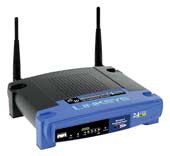Internet Protocol version 6 (IPv6) is a network layer protocol for packet-switched internetworks. It is a next version of current IPv4. IPv6 supports 2128 addresses, approximately.
ArsTechnica has published an excellent guide:
The engineers who design the machinery deep inside the bowels of the Internet have been working on it for more than a decade, but recently, companies like Microsoft and Apple have been more aggressive about enabling it in their new products: IPv6, the protocol that will power the next generation Internet.
TCP/IP has served us well since it was born in 1981, but for some time now it has been clear that the IP part has a limitation that makes continued growth of the Internet for decades to come problematic. In order to accommodate a large number of hosts but not waste too much space in the IP packet on overhead, the TCP/IP designers settled on an address size of 32 bits. With 32 bits, it’s possible to express 4,294,967,296 different values. Over half a billion of those are unusable as addresses for various reasons, giving us a total of 3.7 billion possible addresses for hosts on the Internet. As of January 1, 2007, 2.4 billion of those were in (some kind of) use. 1.3 billion were still available and about 170 million new addresses are given out each year. So at this rate, 7.5 years from now, we’ll be clean out of IP addresses; faster if the number of addresses used per year goes up.

